Many Different Vessels but One Goal – Passenger Safety

Because there are so many different kinds of passenger vessels, the critical topic of passenger safety can sometimes appear as a set of niche topics, each one just distantly connected to another. After all, passengers aboard a cruise ship in the Caribbean face safety issues that are much different than a commuter going from Jersey City to Manhattan or a tourist crossing from the Mukilteo, Wash. ferry terminal to Whidbey Island or a family on a fishing vessel in Miami.Importantly, though, for passenger vessel operators, a commitment to safety is not siloed.
Recovery, Resilience and Demand Shifts to Drive Inland Waterway Cargo Flows
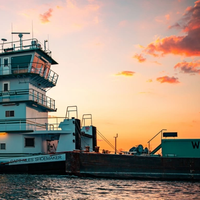
Waterway traffic is coming back. November 2021 saw 52.1 million tons moving on the U.S. inland waterway system, the highest monthly tonnage since October 2019, a few months before the onset of the COVID-19 pandemic, and the shutdowns and stoppages of early 2020. Flows estimated by the Bureau of Transportation Statistics (BTS), part of the U.S. Department of Transportation, based on data from the U.S. Army Corps of Engineers (USACE) show a 25% rise from June 2020. Data in a presentation by The Waterways Council Inc (WCI)…
Inside the World's Top Ferry Lines

The ferry business, unlike more industrial parts of the shipping business, touches wide swaths of the world’s population across continents. The membership of Interferry, the leading trade group for the industry, with non-Governmental organization (NGO) status at the International Maritime Organization (IMO) includes 200+ members from all parts of the ferry spectrum. These include passenger ferries (including fast ferries), Ro/Pax and cruise ferries operating globally. In selecting “the best” we looked beyond the league tables of “the most” (passengers) and “the biggest” (fleet size).
Maritime Accidents & Confidential near-miss Reporting
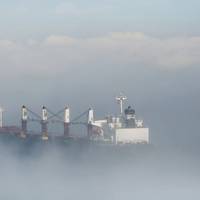
As in most if not all industries, the maritime sector experiences many more near-misses than actual casualties. And yet, information regarding near-misses is seldom shared outside the particular company or vessel/facility involved. This is a needless waste of valuable learning opportunities.The Federal Aviation Administration (FAA) established the first formal confidential near-miss reporting system in the federal government in 1975. The Aviation Safety Reporting System (ASRS) was transferred in 1976 to the National Aeronautics and Space Administration (NASA) for collection of information…
Fast-growing Global Trade Boosts Fuel Demand
Freight movements in the United States and around the rest of the world are growing at some of the fastest rates this decade, which should provide a big boost for diesel consumption in 2018. In the United States, the volume of freight moved by road, rail, pipeline, barge and air between September and November was around 6 percent higher than in the same period a year earlier. Freight volumes are growing at some of the fastest rates since 2011, according to the freight transportation services index compiled by the U.S. Bureau of Transportation Statistics (http://tmsnrt.rs/2DB9aLY). Freight movements are being driven by an increase in coal deliveries to power plants, as well as increases in oil and gas drilling. U.S.
Corpus Christi: Energy Port of the Americas
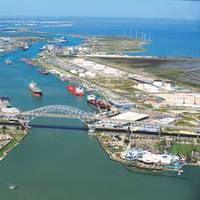
The Port of Corpus Christi lives up to its moniker ‘Energy Port of the Americas,’ as the movement of energy in and out dominates the port’s history and future. John P. LaRue, Executive Director, Port Corpus Christi recently visited Maritime Reporter’s headquarters in New York to discuss the nearly $50 billion in investment projects driving the port forward. “Let’s just start with what we are and what we are not,” said LaRue. “We are not a container port. Up until a few years ago we were an oil import port (serving) three refineries: Citgo, Valero and Flint Hills Resources.
U.S. Freight Recovery Spurs Diesel Demand
U.S. freight movements have started increasing again, which should help boost consumption of distillate fuel oil in 2017 and 2018. The tonnage of freight moved by road, rail, barge, pipeline and air cargo has been increasing year on year since October, after stagnating for much of 2015/16 (http://tmsnrt.rs/2qSDLAJ). Freight movements hit a new record in February, before slipping slightly in March, according to the U.S. Bureau of Transportation Statistics (http://tmsnrt.rs/2rTVx58). Most freight is hauled by equipment that uses diesel engines, or jet turbines in the case of air cargo. Freight is therefore the main driver for consumption of fuels refined from the middle of the crude oil barrel, including distillate fuel oil and jet fuel. The U.S.
AAPA 2016 Conference Focuses on Western Ports

U.S. High-ranking government officials, policy influencers, port authority CEOs and senior staff from throughout the Western Hemisphere, along with a host of maritime industry leaders will converge on Washington, D.C., April 4-6, to participate in the 2016 Spring Conference of the American Association of Port Authorities (AAPA) – the unified and recognized voice of seaports in the Americas. Among the conference highlights will be a keynote luncheon address by U.S. Secretary of Transportation Anthony Foxx on April 6…
Sluggish Freight Movements Have Downside Risks
Global distillate markets remain heavily oversupplied but the glut will not clear unless the world economy avoids recession and there is a renewed acceleration in freight demand. Recent data have been mixed. The consumer side of the U.S. economy appears to be strong but the industrial side is still struggling, and in the rest of the world growth appears to be slowing. U.S. freight movements picked up at the start of the year but demand for moving manufactured products and raw materials across the country remains sluggish. Combined freight movements by road, rail, barge, pipeline and aircraft increased in December and January, the first time freight has increased for two consecutive months since November 2014 (http://tmsnrt.rs/1pa8DbM).
U.S. Freight Volume Dips: Kemp
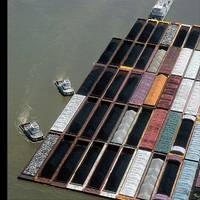
Freight volumes in the United States have fallen year on year for the first time since 2012 and before that the recession of 2009, according to the Bureau of Transportation Statistics. The total volume of freight moved by road, rail, pipeline, inland waterways and as air cargo in November 2015 was 1.1 percent lower than in the corresponding month a year earlier. Freight demand growth has been slowing since the start of last year but the slowdown intensified in the second half and November marked the first time that year-on-year growth turned negative.
Retailers: Port Statistics Bill Would Help Avoid Repeat Slowdown
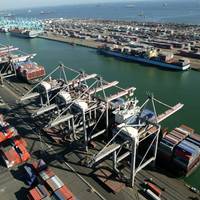
The National Retail Federation (NRF) and more than 100 other business groups called for passage of legislation that would require the Transportation Department to track port statistics, saying it could help avoid a repeat of the congestion and slowdowns that occurred along the West Coast during the labor dispute resolved earlier this year. “U.S. ports are a key component in the American transportation system and the global supply chain that thousands of businesses and millions of workers depend on,” the letter said.
US Senate Panel Approves Bill to Monitor Port Performance
A divided Senate Commerce Committee on Thursday approved legislation requiring the government to report on the performance of major U.S. port operations, including during labor contract talks. The voice vote, which follows a nine-month slowdown at 29 West Coast ports, sent the measure on to possible floor action, over the objections of Democrats and unions who warned that it could lead to improper federal intervention in contract talks. Titled the Port Performance Act, the bill is intended to help Congress analyze supply trends and identify freight bottlenecks by requiring U.S. Department of Transportation data on capacity levels and cargo volumes at major U.S. ports.
RILA Welcomes Introduction of Port Metrics Bill
In a letter sent Wednesday, the Retail Industry Leaders Association (RILA) applauded Senate Commerce, Science, and Transportation Committee Chairman John Thune (R-SD) for introducing legislation that would institute universal port performance standards and a formalized reporting structure for capturing data on true operational capacities of U.S. ports. “Retailers’ supply chain operations are highly dependent on the functionality and efficiency of our U.S. ports,” said Kelly Kolb, vice president for government affairs. The Port Transparency Act (S. 1298) would direct the Bureau of Transportation Statistics (BTS) to work with numerous other entities, including port authorities, to obtain applicable and fruitful port performance measures.
BSEE Launches Efforts to Reduce Offshore Risk
Bureau of Safety and Environmental Enforcement (BSEE) Director Brian Salerno made two announcements during a press conference in Houston Tuesday at the Offshore Technology Conference (OTC) - each aimed at reducing the risks associated with offshore oil and gas operations. First, Director Salerno announced the launch of the SafeOCS program, an initiative aimed at collecting and analyzing “near miss” data. Second, he released BSEE’s first-ever Annual Report, which presents the agency’s analysis of offshore activities, trends, indicators, incidents and other key data points. Salerno said BSEE is working to identify methods to learn more about the causes of all serious offshore incidents.
Transport Sector to Give Lift to Oil Demand
Demand for oil is intimately connected to the demand for transportation in the United States and the other advanced industrial economies. Cars, trucks, airlines, railways and shipping accounted for 71 percent of total U.S. oil consumption in 2013, according to the U.S. Bureau of Transportation Statistics. Petroleum-derived fuels, including gasoline, diesel, jet fuel and fuel oil, met 97 percent of the transportation sector's energy needs. Before the oil shocks of the 1970s as much as half of U.S. oil demand came from power producers and for heating homes, offices and factories. But following the sharp rise in prices, oil's role in other parts of the economy was largely replaced by cheaper coal, gas, nuclear and eventually renewables, leaving oil as a transport fuel.
US Ferries Are Safer, but Regulatory Burdens Grow
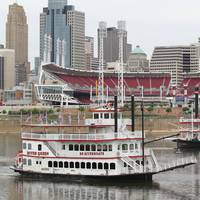
In recent years, ferries have been in the spotlight, in part because of growing mass transit needs and increased road congestion, but also because of concerns about the deadly South Korean ferry sinking last April. We asked Captain Terri Bernstein, the Passenger Vessel Association’s 2014 President, about the industry’s status in the United States. Based in Alexandria, VA, the PVA has over 500 member companies. Ferries are safer, especially since 9/11, but regulatory requirements have swelled and can be onerous, Bernstein said. She’s the owner of BB Riverboats, Inc.
BSEE Director Shares Insights at OTC Houston
"So we are here at OTC, surrounded by extraordinary displays of technology…showcasing capabilities that far exceed what was possible only a few short years ago, and underscoring the fact that the oil gas industry is one of the most innovative and complex on the planet. It is truly awe inspiring, and as a regulator, somewhat daunting to realize that this also poses a challenge for us (regulators). Your industry sets a very aggressive pace, you are the source of new ideas and technology. The challenge for those of us who are regulators is to keep pace with you, and to understand the safety and environmental implications of this technology, so that offshore resources can be developed without incident.
BSEE Addresses Near Miss Reporting

Bureau of Safety and Environmental Enforcement (BSEE) Associate Director Allyson Anderson addressed the Independent Petroleum Association of America’s (IPAA) Offshore Committee last week during their meeting in Houston. In her address, Anderson highlighted the bureau's work with the Bureau of Transportation Statistics (BTS) on the Near-Miss Reporting System and the critical role that industry will play in the success of the program. Anderson said the bureau needs offshore workers to feel empowered to voluntarily report near-misses and be active participants in creating a robust safety culture.
Can Fracking Waste be Carried on the Water?

The barging industry has the answer. It’s nowhere near as complicated as it seems. As shale gas production continues to ramp up across the United States, millions of gallons of wastewater is created through the process of hydraulic fracturing, or fracking. That waste, referred to as shale gas extraction wastewater (SGEWW), or frack water, needs transport to storage and reprocessing facilities around the U.S., including disposal sites in Louisiana, Texas and Ohio. At the moment, the cargo is carried solely by rail and truck.
U.S. DOT Updates National Transportation Statistics
BTS’ National Transportation Statistics Updated - The U.S. Department of Transportation’s Bureau of Transportation Statistics (BTS), a part of the Research and Innovative Technology Administration (RITA), has updated National Transportation Statistics (NTS) – a web-only reference guide to national-level transportation data. NTS, updated quarterly, includes a wide range of national transportation information. NTS consists of more than 260 tables of national data on the transportation system, safety, the economy and energy and the environment, of which 37 were updated today. The next quarterly update is scheduled for April. NTS can be viewed on the BTS website. Contact: Dave Smallen (202) 366-5568.
By the Numbers: Boats, Cargo & the Environment
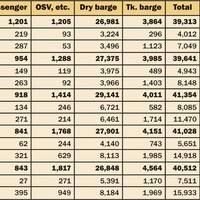
U.S. The latest statistical roundup of the U.S. flag fleet (2012) shows some interesting trends. We know that the U.S. blue water, deep draft fleet continues to dwindle in size and numbers – albeit some exciting recent orders for tankers and containerships. But virtually 99 percent of our commercial fleet is now represented by inland and coastal pushboats, barges and offshore service vessels. Or, in other words, the demographic represented by the readership of MarineNews magazine. What else do we know?
Meeting Regarding International Carriage of Goods by Sea
On December 21, 2001, the Maritime Administration (MARAD) and the U.S. Army Corps of Engineers (Corps) today released September 2001 official U.S. foreign waterborne transportation statistics. Year-to-date figures through September 2001 show an increase in volume of 3% for imports and a six percent decrease in volume for exports over the same time period for 2000. The following cargo summary contains value and weight information by type of service on U.S. waterborne imports and exports for September 2001, along with year-to-date figures. Source: HK Law
U.S. Foreign Waterborne Transportation Statistics Released
On February 27, 2002, the Maritime Administration (MARAD) and the U.S. Army Corps of Engineers (Corps) released November 2001 official U.S. foreign waterborne transportation statistics. Year-to-date figures through November 2001 show an increase in volume of 3 percent for imports and a 5 percent decrease in volume for exports over the same time period for 2000. The figures are all derived from the Waterborne Databank, detailed public U.S. foreign waterborne transportation cargo files, which are now available from MARAD.









